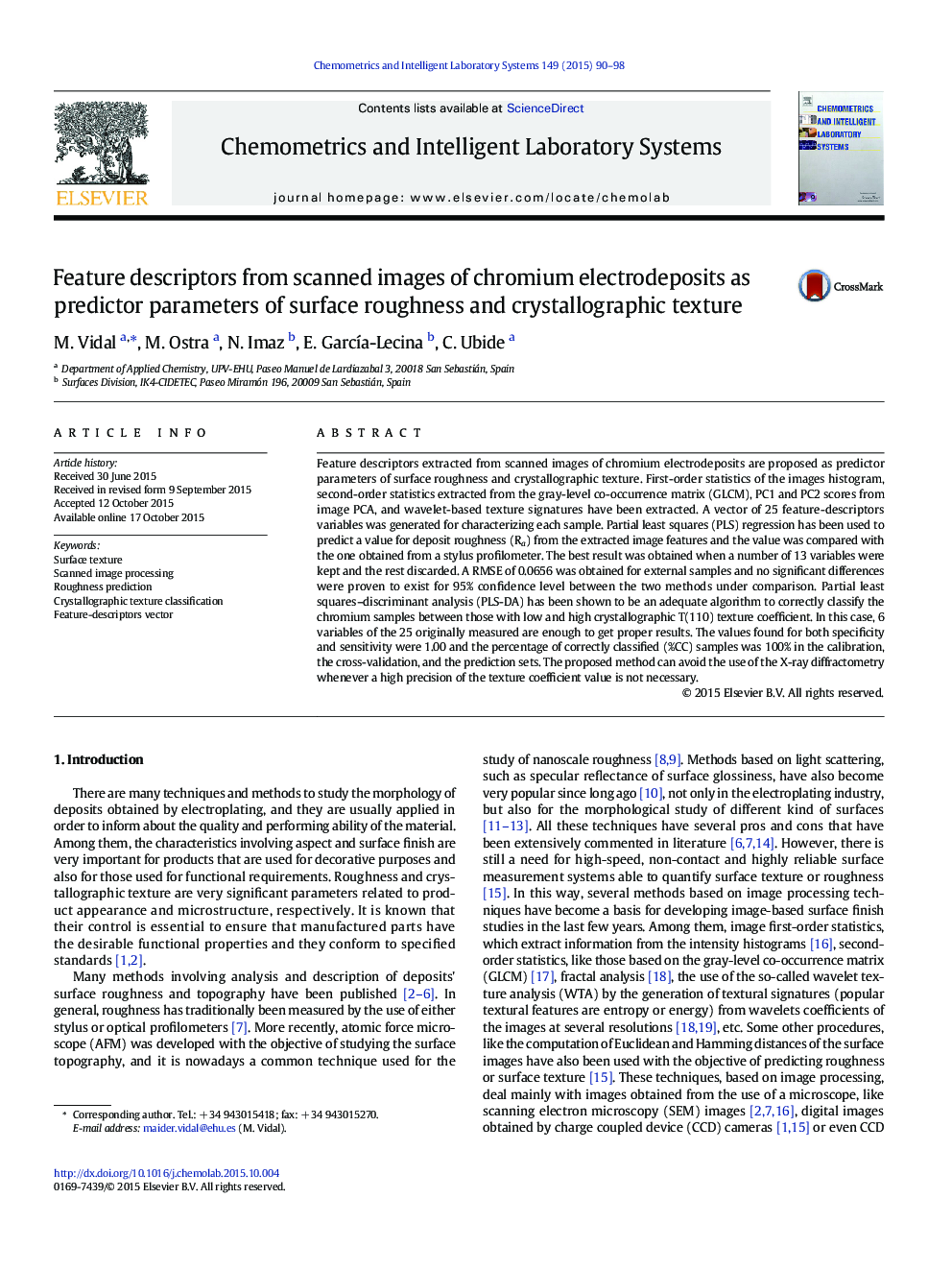| کد مقاله | کد نشریه | سال انتشار | مقاله انگلیسی | نسخه تمام متن |
|---|---|---|---|---|
| 1179208 | 962764 | 2015 | 9 صفحه PDF | دانلود رایگان |
• Scanned image processing presented as a valuable tool in the plating evaluation.
• Feature descriptors of scanned images predict surface roughness in chromium plating.
• Feature descriptors of scanned images classify crystal texture in chromium plating.
Feature descriptors extracted from scanned images of chromium electrodeposits are proposed as predictor parameters of surface roughness and crystallographic texture. First-order statistics of the images histogram, second-order statistics extracted from the gray-level co-occurrence matrix (GLCM), PC1 and PC2 scores from image PCA, and wavelet-based texture signatures have been extracted. A vector of 25 feature-descriptors variables was generated for characterizing each sample. Partial least squares (PLS) regression has been used to predict a value for deposit roughness (Ra) from the extracted image features and the value was compared with the one obtained from a stylus profilometer. The best result was obtained when a number of 13 variables were kept and the rest discarded. A RMSE of 0.0656 was obtained for external samples and no significant differences were proven to exist for 95% confidence level between the two methods under comparison. Partial least squares–discriminant analysis (PLS-DA) has been shown to be an adequate algorithm to correctly classify the chromium samples between those with low and high crystallographic T(110) texture coefficient. In this case, 6 variables of the 25 originally measured are enough to get proper results. The values found for both specificity and sensitivity were 1.00 and the percentage of correctly classified (%CC) samples was 100% in the calibration, the cross-validation, and the prediction sets. The proposed method can avoid the use of the X-ray diffractometry whenever a high precision of the texture coefficient value is not necessary.
Journal: Chemometrics and Intelligent Laboratory Systems - Volume 149, Part A, 15 December 2015, Pages 90–98
